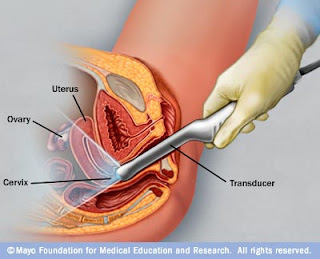Definition
Ultrasound examination, also called sonography or diagnostic medical sonography, is an imaging method that uses high-frequency sound waves to produce precise images of structures within your body. The images produced during an ultrasound examination often provide information that's valuable in diagnosing and treating a variety of diseases and conditions.
Most ultrasound examinations are done using a sonar device outside of your body, though some ultrasound examinations involve placing a device inside your body.
Despite its valuable uses, ultrasound can't provide images of all areas of your body. But there are several other imaging alternatives.
Why it's done
You may need to undergo an ultrasound for a variety of reasons. Ultrasound may be used, among other things, to:
- Evaluate a fetus
- Diagnose gallbladder disease
- Evaluate flow in blood vessels
- Guide a needle biopsy
- Guide the biopsy and treatment of a tumor
- Check your thyroid gland
- Study your heart
- Diagnose some forms of infection
- Diagnose some forms of cancer
- Reveal abnormalities in the scrotum and prostate
- Evaluate abnormalities of the muscles and tendons
This ultrasound shows gallstones.
An ultrasound uses sound waves to create an image. This ultrasound shows a benign liver tumor.
These ultrasound images help guide a needle into a tumor (left), where material is injected (right) to help destroy tumor cells.
Risks
Diagnostic ultrasound is a safe procedure that uses low-power sound waves. There are no direct risks from a diagnostic ultrasound exam. Rarely, higher power sound waves can be used for treatment purposes to heat and even destroy some types of tissue or tumors.
Although ultrasound is a valuable tool, it does have its limitations. Sound doesn't travel well through air or bone, so ultrasound isn't effective at imaging parts of your body that have gas in them or that are obscured by bone. Rather than using ultrasound to view these areas, your doctor may instead order other imaging tests, such as CT or MRI scans, or X-rays.
How you prepare
How you prepare for an ultrasound depends on which area of your body needs evaluation:
- Some ultrasound exams require no preparation.
- Others require that you forgo food and liquids for up to six hours before the exam.
- Still others require that you not urinate before the exam to ensure that your bladder will be full, allowing better visualization of the uterus, ovaries or prostate.
When scheduling your ultrasound, ask your doctor for specific instructions for your particular exam.
What you can expect
During an ultrasound exam, you usually lie on an examination table. A small amount of gel is applied to your skin. The gel helps eliminate the formation of air pockets between the ultrasound and your body. During the exam, a technician trained in ultrasound imaging (sonographer) presses a small hand-held device (transducer), about the size of a bar of soap, against your skin over the area of your body being examined, moving from one area to another as necessary.
Based on the same principles as sonar, a technology used to detect underwater objects, the transducer generates and receives high-frequency sound waves that can't be heard by the human ear.
As the sonographer places the transducer on your skin, crystals inside the transducer emit pulses of sound waves that travel into your body. Your tissues, bones and body fluids reflect the sound waves and bounce them back to the transducer. The transducer then sends this information to a computer, which composes detailed images based on the patterns created by the sound waves.
Though the majority of ultrasound exams are performed with a transducer on your skin, some ultrasounds are done inside your body (invasive ultrasounds). For these exams, the transducer is attached to a probe that's inserted into a natural opening in your body. Examples of these exams include:
- Transesophageal echocardiogram. The transducer is inserted into your esophagus to obtain images of the nearby heart. Such exams are typically performed along with sedation.
- Transrectal ultrasound. A small, specialized transducer is inserted into a man's rectum to view his prostate.
- Transvaginal ultrasound. A small, specialized transducer is inserted into a woman's vagina to view her uterus and ovaries.
During a transvaginal ultrasound, your doctor or a medical technician inserts a wand-like device (transducer) into your vagina while you lie on your back on an exam table. The transducer emits sound waves that generate images of your pelvic organs.
Ultrasound is usually a painless procedure. However, you may experience some mild discomfort as the sonographer guides the transducer over your body, especially if you're required to have a full bladder. A typical ultrasound exam takes from 30 minutes to an hour.
Results
When your exam is complete, the sonographer and a radiologist generally view the ultrasound images on film or on a computer monitor. The radiologist analyzes the images and sends a report of the findings to your doctor.
If your ultrasound exam is for an urgent medical condition, your doctor should receive your results immediately. Otherwise, you should have your results within a few days.
Fetal Ultrasound




Tidak ada komentar:
Posting Komentar